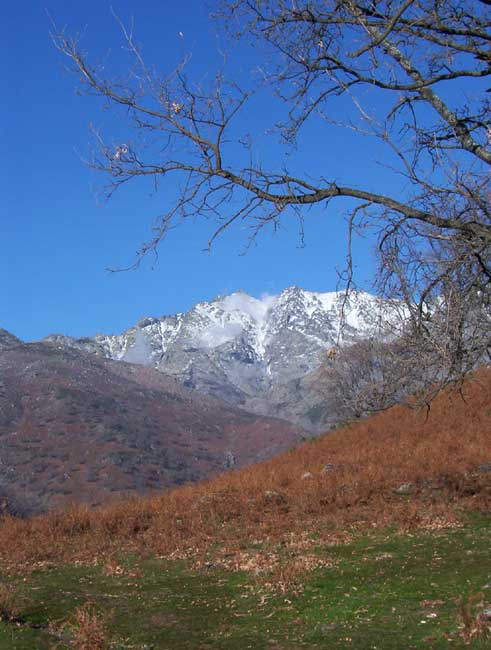|
Candeleda
Candeleda () is a town and municipality located in the province of Ávila, in the autonomous community of Castile and León, Spain. According to the 2011 INE census, the municipality has a population of 5,213 inhabitants, making it the fifth largest municipality in the province after Ávila –the capital–, Arévalo, Arenas de San Pedro and Las Navas del Marqués.Instituto Nacional de Estadística Población, superficie y densidad por CCAA y provincias. Fuentes del Instituto Geográfico Nacional y del Padrón de 2011. Consultado el 25 de octubre de 2012. The town is located on the southern hillside of the Gredos mountains, 432 m above sea level, giving it a micr ... [...More Info...] [...Related Items...] OR: [Wikipedia] [Google] [Baidu] |
Municipalities Of Spain
The municipality ( es, municipio, , ca, municipi, gl, concello, eu, udalerria, ast, conceyu)In other languages of Spain: * Catalan/Valencian (), sing. ''municipi''. * Galician () or (), sing. ''municipio''/''bisbarra''. * Basque (), sing. ''udalerria''. * Asturian (), sing. ''conceyu''. is the basic local administrative division in Spain together with the province. Organisation Each municipality forms part of a province which in turn forms part or the whole of an autonomous community (17 in total plus Ceuta and Melilla): some autonomous communities also group municipalities into entities known as '' comarcas'' (districts) or '' mancomunidades'' (commonwealths). There are a total of 8,131 municipalities in Spain, including the autonomous cities of Ceuta and Melilla. In the Principality of Asturias, municipalities are officially named ''concejos'' (councils). The average population of a municipality is about 5,300, but this figure masks a huge range: the most po ... [...More Info...] [...Related Items...] OR: [Wikipedia] [Google] [Baidu] |
Oropesa, Spain
Oropesa is a Spanish town in the province of Toledo. The town of 2,872 is famous for its castle, which was built in 1402, turned into a Parador Nacional in 1930. The castle was formerly the residence of the Toledo family of nobles. This includes Francisco de Toledo, Count of Oropesa, who became the Viceroy of Peru The viceroys of Peru ruled the Viceroyalty of Peru from 1544 to 1824 in the name of the monarch of Spain. The territories under ''de jure'' rule by the viceroys included in the 16th and 17th century almost all of South America except eastern Brazi .... The town has a yearly celebration in April called "Jornadas Medievales", or "Medieval Days", which plays off the presence of the Castle in Oropesa. References See alsoMunicipal Website (in Spanish) Municipalities in the Province of Toledo {{CastileLaMancha-geo-stub ... [...More Info...] [...Related Items...] OR: [Wikipedia] [Google] [Baidu] |
Crimson
Crimson is a rich, deep red color, inclining to purple. It originally meant the color of the kermes dye produced from a scale insect, '' Kermes vermilio'', but the name is now sometimes also used as a generic term for slightly bluish-red colors that are between red and rose. It is the national color of Nepal. History Crimson (NR4) is produced using the dried bodies of a scale insect, ''Kermes'', which were gathered commercially in Mediterranean countries, where they live on the kermes oak, and sold throughout Europe. Kermes dyes have been found in burial wrappings in Anglo-Scandinavian York. They fell out of use with the introduction of cochineal, also made from scale insects, because although the dyes were comparable in quality and color intensity, it needed ten to twelve times as much kermes to produce the same effect as cochineal. Carmine is the name given to the dye made from the dried bodies of the female cochineal, although the name crimson is sometimes applie ... [...More Info...] [...Related Items...] OR: [Wikipedia] [Google] [Baidu] |
Flag
A flag is a piece of fabric (most often rectangular or quadrilateral) with a distinctive design and colours. It is used as a symbol, a signalling device, or for decoration. The term ''flag'' is also used to refer to the graphic design employed, and flags have evolved into a general tool for rudimentary signalling and identification, especially in environments where communication is challenging (such as the maritime environment, where semaphore is used). Many flags fall into groups of similar designs called flag families. The study of flags is known as " vexillology" from the Latin , meaning "flag" or " banner". National flags are patriotic symbols with widely varied interpretations that often include strong military associations because of their original and ongoing use for that purpose. Flags are also used in messaging, advertising, or for decorative purposes. Some military units are called "flags" after their use of flags. A ''flag'' (Arabic: ) is equivalent to ... [...More Info...] [...Related Items...] OR: [Wikipedia] [Google] [Baidu] |
Spanish Royal Crown
The Spanish Royal Crown may refer to either the heraldic crown, which does not exist physically, or the crown known as the ''corona tumular'', a physical crown used during Spanish royal proclamation ceremonies since the 18th century. It is never worn by the monarch. The last time the ''corona tumular'' was used at a public ceremony was in the ''Cortes Generales'' during the swearing-in of Felipe VI of Spain, King Felipe VI on 19 June 2014 after the abdication of his father, Juan Carlos I of Spain, King Juan Carlos I. Since July 2014, the royal crown and sceptre are on permanent public display for the first time ever in the so-called Crown Room at the Royal Palace of Madrid. History The last Spanish monarchs being solemnly crowned were Juan I of Castile (1379), Ferdinand I of Aragon, Fernando I of Aragon (1414), and Eleanor of Navarre, Leonor of Navarre (1479). Joan III of Navarre was crowned as late as 1555, although she ruled Navarre beyond the Pyrenees. After the 17th centur ... [...More Info...] [...Related Items...] OR: [Wikipedia] [Google] [Baidu] |
Orle (heraldry)
In heraldry, an orle is a subordinary consisting of a narrow band occupying the inward half of where a bordure would be, following the exact outline of the shield but within it, showing the field between the outer edge of the orle and the edge of the shield. An orle can sometimes be confused with an ''inescutcheon or escutcheon voided'' (a smaller shield with a shield-shaped hole), or with a patch of the field left over between a bordure and an inescutcheon. Orles may varied by any of the lines of variation. Discrete charges arranged in the position of an orle are described as ''in orle'' or as "an orle of". File:Inescutcheon within Bordure demo.svg, ''Gules, an inescutcheon argent within a bordure argent'' File:Zeer smal getande binnenzoom.jpg, An orle indented on its inner edge File:Armoiries de Stael.svg, ''Argent, eight torteaux (roundels gules) in orle''; alternatively ''an orle of eight torteaux'' File:Balliol College, Oxford.svg, The arms of Dervorguilla of Galloway a ... [...More Info...] [...Related Items...] OR: [Wikipedia] [Google] [Baidu] |
Gules
In heraldry, gules () is the tincture with the colour red. It is one of the class of five dark tinctures called "colours", the others being azure (blue), sable (black), vert (green) and purpure (purple). In engraving, it is sometimes depicted by hatching of vertical lines. In tricking—abbreviations written in areas to indicate their tinctures—it is marked with gu.. Etymology The term ''gules'' derives from the Old French word , literally "throats" (related to the English '' gullet''; modern French ), but also used to refer to a fur neckpiece, usually made of red fur. A.C. Fox-Davies states that the term originates from the Persian word , "rose", but according to Brault, there is no evidence to support this derivation. Examples Gules is the most widely used heraldic tincture. Through the sixteenth century, nearly half of all noble coats of arms in Poland had a field gules with one or more argent charges on them. Examples of coats of arms consisting of purely a ... [...More Info...] [...Related Items...] OR: [Wikipedia] [Google] [Baidu] |
Mansory
Mansory is a luxury car modification firm based in Brand, Germany. Besides luxury cars, they also work on supercars, luxury SUVs and custom bikes. The company was founded in 1989 by Iranian-British tuner Kourosh Mansory. His Munich-based workshop focused on modifications for British brands such as Rolls-Royce and Italian brands such as Ferrari. By mid-2001, the company had grown out of its Munich workshop and moved to headquarters in Fichtelgebirge. The company currently operates out of a workshop in Brand, Germany. Mansory works on vehicles from a number of manufacturers, including Aston Martin, Audi, Bentley, BMW, Bugatti, Ferrari, Lamborghini, Lotus Cars, Maserati, Mercedes-Benz, Rolls-Royce, and Tesla. In November 2007, Mansory acquired the Porsche-tuning arm of Rinspeed AG. Rinspeed maintains its Swiss base in Zumikon at Lake Zurich. Currently, Mansory employs 182 members of staff worldwide and has a global dealership network. Mansory's worldwide distribution network inc ... [...More Info...] [...Related Items...] OR: [Wikipedia] [Google] [Baidu] |
Sable (heraldry)
In heraldry, sable () is the tincture black, and belongs to the class of dark tinctures, called "colours". In engravings and line drawings, it is sometimes depicted as a region of crossed horizontal and vertical lines, or else marked with ''sa.'' as an abbreviation. The name derives from the black fur of the sable, a species of marten. Poetic meanings Centuries ago, arms were often described poetically and the tinctures were connected to different gemstones, flowers and heavenly bodies. Sable usually represented the following: * Of jewels, the diamond * Of heavenly bodies, Saturn * Of flowers, the herb nightshade, in these circumstances also called dwal Gallery File:Arms of Dalzell, Earl of Carnwath.svg, Arms of Dalziel family of Scotland File:Arms of the Foljambe family of Walton.png, Arms of the Foljambe family of Walton, Osberton and Aldwark. File:Blason fam nl van Borssele de Zuylen 1.svg, Coat of arms of Frank II van Borselen. File:DEU Hueckelhoven COA.svg, Coat of arm ... [...More Info...] [...Related Items...] OR: [Wikipedia] [Google] [Baidu] |
Azure (heraldry)
In heraldry, azure ( , ) is the tincture with the colour blue, and belongs to the class of tinctures called "colours". In engraving, it is sometimes depicted as a region of horizontal lines or else is marked with either az. or b. as an abbreviation. The term azure shares origin with the Spanish word "azul", which refers to the same color, deriving from hispanic Arabic ''lazawárd'' the name of the deep blue stone now called lapis lazuli. The word was adopted into Old French by the 12th century, after which the word passed into use in the blazon of coats of arms. As an heraldic colour, the word ''azure'' means "blue", and reflects the name for the colour in the language of the French-speaking Anglo-Norman nobles following the Norman Conquest of England. A wide range of colour values is used in the depiction of azure in armory and flags, and in common usage it is often referred to simply as 'blue'. In addition to the standard blue tincture called azure, there is a lighter blu ... [...More Info...] [...Related Items...] OR: [Wikipedia] [Google] [Baidu] |
Castile And Leon
Castile, Castille or Castilla may refer to: Places Spain * Castile (historical region), a vaguely defined historical region of Spain covering most of Castile and León, all of the Community of Madrid and most of Castilla–La Mancha * Kingdom of Castile, one of the medieval kingdoms of the Iberian peninsula, 1065–1230 * Crown of Castile, a medieval state in the Iberian Peninsula that formed in 1230 *Two regions of the Kingdom of Spain (until 1982): ** Old Castile, in the north ** New Castile (Spain), in the south *Two contemporary autonomous communities of Spain: ** Castile and León, in the north **Castilla–La Mancha, in the south Elsewhere *Castile, New York * Castile (village), New York * Castilla District, Piura Province, Peru * Castilla de Oro, name given by Spanish in 16th century to Central American territories * Governorate of New Castile, modern Peru * Castilla, Sorsogon, municipality in Sorsogon, Philippines Other uses * Castile (surname) * Castilians, inhabitan ... [...More Info...] [...Related Items...] OR: [Wikipedia] [Google] [Baidu] |



